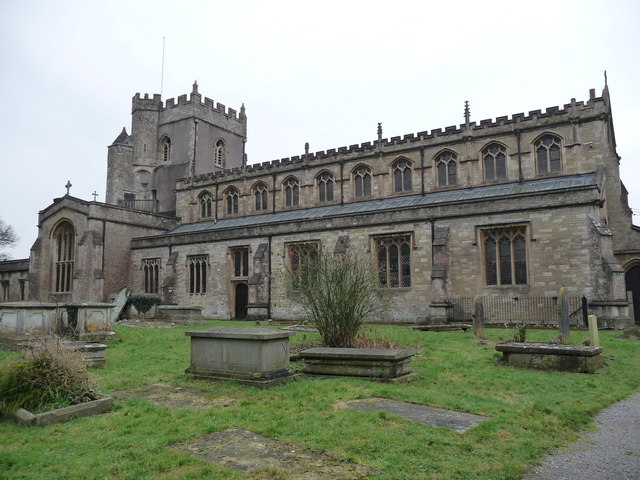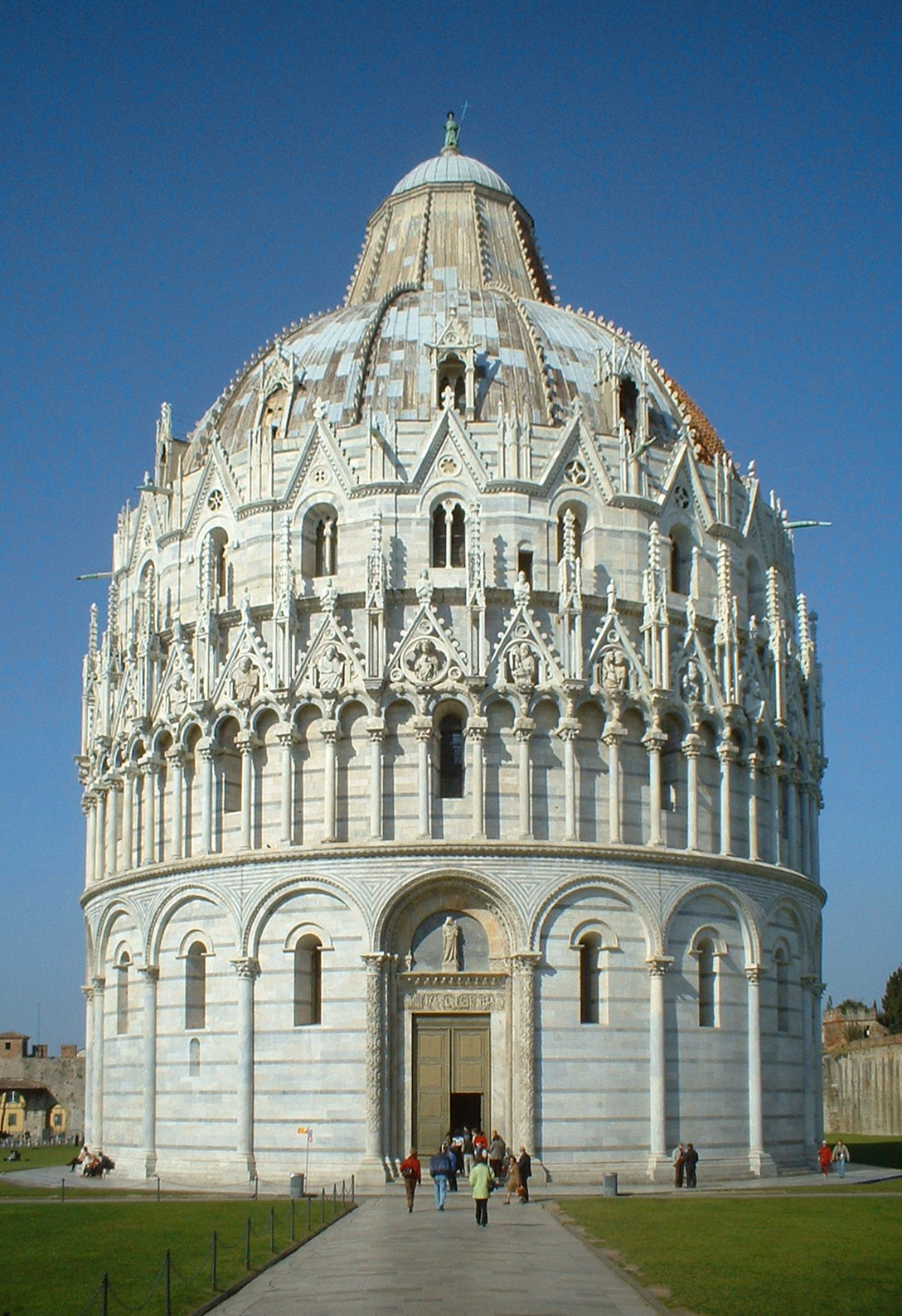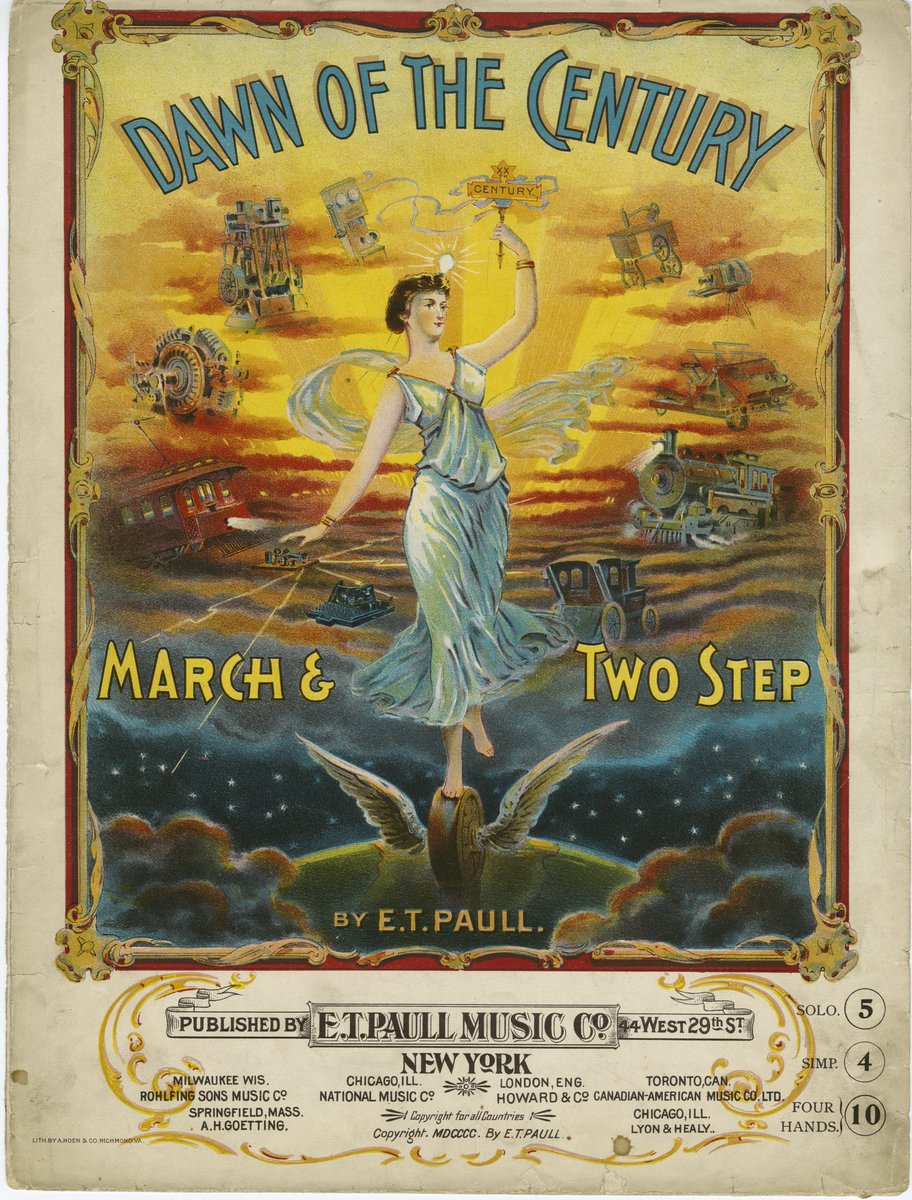|
St John's Church, Warminster
St John's Church, in full the Church of St John the Evangelist, is a Church of England church in the Boreham area in the south-east of the town of Warminster, Wiltshire, England. It was built in 1865 and is a Grade II* listed building. History and features The church was begun in 1865 due to the overcrowding of the parish church of St Denys, and was completed in the same year. The site is about southeast of the town centre, in a field called Picked Acre alongside Boreham Road, which had been given by William Temple of Bishopstrow House in 1859. The Rev J. E. Phillips, vicar of St Denys', opened a building fund which in less than one year raised £2,700, an amount greater than the building's eventual cost of £1,935. The church was designed by London architect George Edmund Street in 1864–1865, in Early English style. Given the relatively ordinary-looking exterior, the interior is quite unexpected. The tiling throughout, reredos, low chancel screen wall, font, pulpit, oa ... [...More Info...] [...Related Items...] OR: [Wikipedia] [Google] [Baidu] |
Warminster
Warminster () is a historic market town and Civil parishes in England, civil parish in south-west Wiltshire, England, on the western edge of Salisbury Plain. The parish had a population of 18,173 in 2021. The name ''Warminster'' occurs first in the early 10th century and the St Denys' Church, Warminster, Minster Church of St Denys was begun in the 11th century. The High Street and Market Place have many fine buildings including the Warminster Athenaeum, Athenaeum Centre, the Warminster Town Hall, Town Hall, St Lawrence Chapel, The Old Bell and a variety of independent shops. Several Army establishments, known collectively as the Warminster Garrison, are on the edges of the town. Etymology The origin of the root ''Wor'' is ''wara'', the Genitive case, genitive plural of the Old English noun ''waru'' meaning "those that care for, watch, guard, protect, or defend." It was used as an endonym by both Goths and Jutes. Their specific ethnonym is unknown, though it likely was related ... [...More Info...] [...Related Items...] OR: [Wikipedia] [Google] [Baidu] |
Early English Style
English Gothic is an architectural style that flourished from the late 12th until the mid-17th century. The style was most prominently used in the construction of cathedrals and churches. Gothic architecture's defining features are pointed arches, rib vaults, buttresses, and extensive use of stained glass. Combined, these features allowed the creation of buildings of unprecedented height and grandeur, filled with light from large stained glass windows. Important examples include Westminster Abbey, Canterbury Cathedral and Salisbury Cathedral. The Gothic style endured in England much longer than in Continental Europe. The Gothic style was introduced from France, where the various elements had first been used together within a single building at the choir of the Abbey of Saint-Denis north of Paris, completed in 1144. The earliest large-scale applications of Gothic architecture in England were Canterbury Cathedral and Westminster Abbey. Many features of Gothic architecture had e ... [...More Info...] [...Related Items...] OR: [Wikipedia] [Google] [Baidu] |
Baptistery
In Church architecture, Christian architecture the baptistery or baptistry (Old French ''baptisterie''; Latin ''baptisterium''; Greek language, Greek , 'bathing-place, baptistery', from , baptízein, 'to baptize') is the separate centrally planned structure surrounding the baptismal font. The baptistery may be incorporated within the body of a church or cathedral, and provided with an altar as a chapel. In the early early Christianity, Church, the catechumens were instructed and the sacrament of baptism was administered in the baptistery. Design The sacramental importance and sometimes architectural splendour of the baptistery reflect the historical importance of baptism to Christians. Beginning in the fourth century, baptisteries in Italy were often designed with an octagonal plan. The octagonal plan of the Lateran Baptistery, the first structure expressly built as a baptistery, provided a widely followed model. The baptistery might be twelve-sided, or even circular as at Pisa. ... [...More Info...] [...Related Items...] OR: [Wikipedia] [Google] [Baidu] |
Turn Of The Century
The turn of the century is the transition from one century to another, or the time period before or after that change in centuries. Usage The phrase "turn of the century" is generally understood to mean the change (whether upcoming or past) closest to the current generation. During the 20th century, the phrase, unqualified, was used to refer to the transition from the 19th century to the 20th century. In the 21st century, "turn of the 21st century" (or 20th century) may be used to avoid ambiguity. The ''Chicago Manual of Style'' has indicated some ambiguity on the exact meaning of the phrase "turn of the ''n''-th century". For instance, if a statement describes an event as taking place "at the turn of the 18th century", it could refer to a period around the year 1701 or around 1800, that is, the beginning or end of that century. Consequently they recommend only using "turn of the century", in a context that makes clear which transition is meant, otherwise using different, unambi ... [...More Info...] [...Related Items...] OR: [Wikipedia] [Google] [Baidu] |
James Powell And Sons
The firm of James Powell and Sons, also known as Whitefriars Glass, were London-based English glassmakers, leadlighters and stained-glass window manufacturers. As Whitefriars Glass, the company existed from the 18th century, but became well known as a result of the 19th-century Gothic Revival and the demand for stained glass windows. History Early years In 1834, James Powell (1774–1840) purchased the Whitefriars Glass Company, a small glassworks off Fleet Street in London, believed to have been established in 1680. He was a London wine merchant and entrepreneur, of the same family as the founder of the Scout movement, Robert Baden-Powell. Powell, and his sons Arthur and Nathanael, were newcomers to glass making, but soon acquired the necessary expertise. They experimented and developed new techniques, devoting a large part of their production to the creating of stained glass windows for churches. The firm acquired a large number of patents for their new ideas and became worl ... [...More Info...] [...Related Items...] OR: [Wikipedia] [Google] [Baidu] |
Charles Ponting
Charles Edwin Ponting, F.S.A., (1850–1932) was a Gothic Revival architect who practised in Marlborough, Wiltshire. Career Ponting began his architectural career in 1864 in the office of the architect Samuel Overton. He was agent for the Meux brewing family's estate from 1870 until 1888. After Admiral Hedworth Meux inherited Theobalds House in Hertfordshire in 1910, Ponting enlarged the house for him. In 1883 the Diocese of Salisbury appointed Ponting Surveyor of Ecclesiastical Dilapidations for the Archdeaconry of Wiltshire. Part of the Diocese of Bristol was added to his responsibilities in 1887 and the Diocese of Salisbury added the Archdeaconry of Dorset to his duties in 1892. He resigned from his post with the Bristol Diocese in 1915 and from that with the Salisbury Diocese in 1923. Family Ponting married Overton's daughter Martha Margaretta in 1872. She died in 1873 at the age of 20 while giving birth to their twin daughters Martha and Mary. Ponting never remarried ... [...More Info...] [...Related Items...] OR: [Wikipedia] [Google] [Baidu] |
Opus Sectile
''Opus sectile'' is a form of '' pietra dura'' popularized in the ancient and medieval Roman world where materials were cut and inlaid into walls and floors to make a picture or pattern. Common materials were marble, mother of pearl, and glass. The materials were cut in thin pieces, polished, then trimmed further according to a chosen pattern. Unlike tessellated mosaic techniques, where the placement of very small uniformly sized pieces forms a picture, ''opus sectile'' pieces are much larger and can be shaped to define large parts of the design. The term ''opus sectile'' was introduced in recent centuries, but the Romans used the term ''sectilia pavimenta''. Origin and evolution Early examples It appeared in Rome in the first decades of the 1st c. BC when "stone slab floors came into use, at least in the smaller element type". Under Augustus, its use in the flooring of public buildings began. The success of the first experiments on a monumental scale led to its applicatio ... [...More Info...] [...Related Items...] OR: [Wikipedia] [Google] [Baidu] |
Mosaic
A mosaic () is a pattern or image made of small regular or irregular pieces of colored stone, glass or ceramic, held in place by plaster/Mortar (masonry), mortar, and covering a surface. Mosaics are often used as floor and wall decoration, and were particularly popular in the Ancient Rome, Ancient Roman world. Mosaic today includes not just murals and pavements, but also artwork, hobby crafts, and industrial and construction forms. Mosaics have a long history, starting in Mesopotamia in the 3rd millennium BC. Pebble mosaics were made in Tiryns in Mycenean civilisation, Mycenean Greece; mosaics with patterns and pictures became widespread in classical times, both in Ancient Greece and Ancient Rome. Early Christian basilicas from the 4th century onwards were decorated with wall and ceiling mosaics. Mosaic art flourished in the Byzantine Empire from the 6th to the 15th centuries; that tradition was adopted by the Norman dynasty, Norman Kingdom of Sicily in the 12th century, by th ... [...More Info...] [...Related Items...] OR: [Wikipedia] [Google] [Baidu] |
Clayton And Bell
Clayton and Bell was one of the most prolific and proficient British workshops of stained-glass windows during the latter half of the 19th century and early 20th century. The partners were John Richard Clayton (1827–1913) and Alfred Bell (1832–1895). The company was founded in 1855 and continued until 1993. Their windows are found throughout the United Kingdom, in the United States, Canada, Australia and New Zealand. Clayton and Bell's commercial success was due to the high demand for stained-glass windows at the time, their use of the best-quality glass available, the excellence of their designs and their employment of efficient factory methods of production. They collaborated with many of the most prominent Gothic Revival architects and were commissioned, for example, by John Loughborough Pearson to provide the windows for the newly constructed Truro Cathedral. Background During the Middle Ages, Medieval period, from the Norman Conquest of England in 1066 until the 1530 ... [...More Info...] [...Related Items...] OR: [Wikipedia] [Google] [Baidu] |
Stained Glass
Stained glass refers to coloured glass as a material or art and architectural works created from it. Although it is traditionally made in flat panels and used as windows, the creations of modern stained glass artists also include three-dimensional structures and sculpture. Modern vernacular usage has often extended the term "stained glass" to include domestic leadlight, lead light and ''objet d'art, objets d'art'' created from glasswork, for example in the famous lamps of Louis Comfort Tiffany. As a material ''stained glass'' is glass that has been coloured by adding Salt (chemistry), metallic salts during its manufacture. It may then be further decorated in various ways. The coloured glass may be crafted into a stained-glass window, say, in which small pieces of glass are arranged to form patterns or pictures, held together (traditionally) by strips of lead, called cames or calms, and supported by a rigid frame. Painted details and yellow-coloured Silver staining, silver stain ... [...More Info...] [...Related Items...] OR: [Wikipedia] [Google] [Baidu] |
Crucifix
A crucifix (from the Latin meaning '(one) fixed to a cross') is a cross with an image of Jesus on it, as distinct from a bare cross. The representation of Jesus himself on the cross is referred to in English as the (Latin for 'body'). The crucifix emphasizes Jesus' sacrifice, including his death by crucifixion, which Christians believe brought about the redemption of mankind. Most crucifixes portray Jesus on a Latin cross, rather than a Tau cross or a Coptic cross. The crucifix is a principal symbol for many groups of Christians, and one of the most common forms of the Crucifixion in the arts. It is especially important in the Catholic Church, and is also used in the Lutheran Churches, Anglican Churches, Eastern Orthodox Church, and in most Oriental Orthodox Churches (except the Armenian Church and Syriac Church). The symbol is less common in churches of other Protestant denominations, and in the Assyrian Church of the East and Armenian Apostolic Church, which prefer to ... [...More Info...] [...Related Items...] OR: [Wikipedia] [Google] [Baidu] |
Pulpit
A pulpit is a raised stand for preachers in a Christian church. The origin of the word is the Latin ''pulpitum'' (platform or staging). The traditional pulpit is raised well above the surrounding floor for audibility and visibility, accessed by steps, with sides coming to about waist height. From the late Middle Ages, late medieval period onwards, pulpits have often had a canopy known as the sounding board, ''tester'' or ''abat-voix'' above and sometimes also behind the speaker, normally in wood. Though sometimes highly decorated, this is not purely decorative, but can have a useful acoustic effect in projecting the preacher's voice to the Church (congregation), congregation below, especially prior to the invention of modern audio equipment. Most pulpits have one or more book-stands for the preacher to rest his bible, notes or texts upon. The pulpit is generally reserved for clergy. This is mandated in the regulations of the Catholic Church, and several others (though not a ... [...More Info...] [...Related Items...] OR: [Wikipedia] [Google] [Baidu] |







